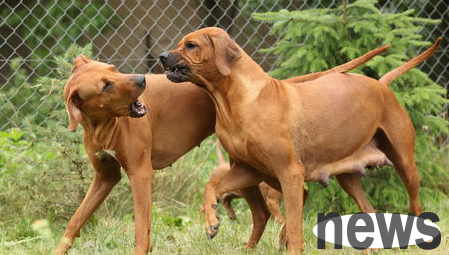Every dog will experience various problems during its growth, which require the dog to discover and respond correctly in a timely manner. For female dogs, mastitis is one of the most important diseases that harm dogs. What are the symptoms of mastitis in dogs? How to prevent and treat it?

1. Causes and symptoms of canine mastitis
Canine mastitis is also called mastitis. This disease not only harms the physical and mental health of the bitch, but is also not good for breastfeeding puppies. This is acute or chronic inflammation that one or more breast glands can occur simultaneously. This disease often occurs in breastfeeding female dogs. So what are the causes and symptoms of dog mastitis?
1. Cause
Acute mastitis is mainly seen when the breast damages the breasts when the baby dogs suck breasts or trauma when the baby dogs suck, and also when the milk accumulates suddenly during breastfeeding or when all the baby dogs die and all the milk is stagnant. This disease can also be secondary to metastatic infection of acute uterine inflammation. The pathogens that are infected are mainly streptococci and Staphylococcus. Chronic mastitis is more common in elderly dogs and may be related to hormone imbalance.
2. Symptoms
In the early stage of mastitis, the breasts suffer from varying degrees of congestion, redness, enlarged and hardened breasts, warm feel, enlarged lymph nodes on the breasts, and decreased lactation or stopped breastfeeding. As the infection develops, systemic symptoms appear, body temperature rises, depression, loss of appetite, dehydration, etc. Mastitis may develop into a breast abscess, the center of the swelling begins to become soft and has a volatility, and sometimes self-absorbing and pus flows. Chronic supranitis is characterized by the formation of cysts in the breast tissue, which sometimes develops into tumors.
2. Prevention and treatment of canine mastitis
Canine mastitis is caused by poor milk discharge, which causes lotion to inflammation of the breast. Mastitis not only brings pain to female dogs, but also has a certain impact on puppies. So what should I do when I encounter this kind of problem? How to treat it is good.

1. When treating acute mastitis, antibiotic treatment should be used as soon as possible, and breastfeeding of whole-little breastfeeding dogs should be weaned and artificially raised. Massage and milk the onset breasts several times a day. After breastfeeding, water antibiotics are injected into the milk tank through the nipple tube, 2 to 3 times a day. Antibiotics should be used with broad spectrum, such as penicillin and streptomycin, and ampicillin. Furan and sulfonamide drugs are also available. For those who have breast abscess, they can cut the pus in the softest place and rinse with penicillin saline. The ring-shaped blocking of 0.2% procaine hydrochloride solution around the breast has a better effect. In addition to breasts with severe milk accumulation in the milk pool, a hot compress can be used first and then cold compress, twice a day. For dogs with systemic symptoms, infusion therapy should be used, and calcium supplements and vitamin C should be supplemented. For those who form breast tumors, tumor mastectomy can be performed.
2. Prevention:
(1) Keep the state of mind clean.
(2) Shave the hair around the breast and pay attention to the cleaning of the breast.
(3) Trim the toenails of the puppy to avoid scratching the bitch's breasts while drinking milk.